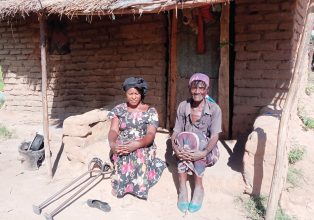Unmasking medical male circumcision myths
Jones Mchacha, a resident of Chilobwe Township in Malawi’s commercial capital, Blantyre, was among youths that went to Chimwankhunda Primary School a few weeks ago to get circumcised. This was one of the centres for the voluntary medical male circumcision (VMMC) campaign.
“I have come to be circumcised to protect myself from contracting HIV,” confidently said Mchacha.
He says he first heard of VMMC from the radio and that he decided to undergo the procedure after learning that it reduces chances of contracting HIV and other sexually transmitted infections (STIs).
“Of course, others told me that government has intensified this exercise as a population control strategy,” he said, adding: “but I thought it wise to do it to prevent STIs. HIV does not have a cure, so prevention is much better.”

The Malawi VMMC Communication Strategy for 2012-2016 describes circumcision as a surgical removal of all or part of the foreskin of the manhood.
Mchacha, however, does not know the exact percentage by which circumcision prevents one from contracting HIV; neither can he explain how the chances are reduced.
And he is not alone in his shallow understanding of the concept. Random interviews conducted among the youth waiting to get circumcised established that they are excited to have VMMC due to peer pressure as it is believed that those who are not circumcised are not fashionable.
Lufina Daniel, a mother of seven children, five of whom are boys, says she has circumcised two of her boys aged 10 and 13 as a preventive measure for contracting STIs.
“This generation needs VMMC more than ever because the pandemic is scary,” she says.
Team leader of Chimwankhunda VMMC centre, Grace Mwala, says there has been a high turnout of men (of the 10-44 year age range) for VMMC. She says the centre did 62 male circumcision procedures per day on average.
Before opening Chimwankhunda Centre, Mwala supervised Chirimba Centre where 852 males (aged 10-44 years) were circumcised in three weeks.
“Everyone coming for VMMC has been counselled of its benefits and challenges and has also been tested for HIV,” she says, adding that the people are screened fo eligibility.
Those that are diabetic, have STIs or whose bleeding takes long to clot are ineligible for the procedure.
Mwala reveals that the circumcised youths aged 14 and above were given 30 condoms each after the procedure.
The VMMC communication strategy, however, points out that misconceptions such as that VMMC provides 100 percent protection and knowledge gaps regarding the understanding of VMMC as a complete removal of foreskin and its associated benefits are some of the barriers to the process.
“Some young men are going for VMMC for medical conditions and to reduce the risk of STIs or for hygiene,” says the strategy.
Ministry of Health spokesperson Henry Chimbali, while admitting that many people tend to misunderstand the VMMC concept, says the ministry has the responsibility to make it clear that VMMC provides only partial protection and does not eliminate the risk of acquiring HIV.
“When one is circumcised, it does not give them immunity to any STIs. They still have to practice safe sex and observe the ABC concept,” he says.
In July, Ministry of Health in conjunction with Population Services International (PSI) embarked on a VMMC campaign in Blantyre, Phalombe, Thyolo, Lilongwe, Nkhotakota and Balaka districts targeting the 10-49 age bracket. Boys aged 10-14 needed to be accompanied by parents or guardians.
The campaign targeted 60 000 men in all the districts and ran for 30 days from July 27 to August 31. About 400 000 men have been circumcised since the introduction of VMMC in the country according to Chimbali.
In 2007, World Health Organisation (WHO) and Joint United Nations Programme on HIV and Aids (UNAids) recognised male circumcision as an effective intervention for HIV prevention in regions with high HIV prevalence and low male circumcision rates such as Malawi in sub-Saharan Africa.
The communication strategy says Malawi is one of such countries with high HIV prevalence and it is where the majority of males are not circumcised.
“More recently, a 60 percent reduction in HIV acquisition among circumcised men aged 18-24 years was demonstrated in a study from South Africa,” reads the information from the strategy document in part.





The whole circumcision campaign is a sham created for government and NGOs to get foreign funding. Circumcision is not a vaccine and anyone who circumcises is at risk the same way as the man who is not circumcised. Example is the high prevalence rate in Mangochi, Machinga etc. It is a pity that people do not realise that by removing cells from a man sexual organs they deny them normal and natural satisfaction. because critical cells are removed and research has shown how this can be detrimental to sexual relations and marriage. Poor Malawi men and Africans are being forced to under go circumcision by azungu because we can’t think for ourselves.
I am totally in a greement, they only talk about advantage not disadvatage.